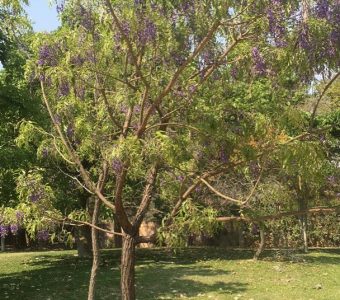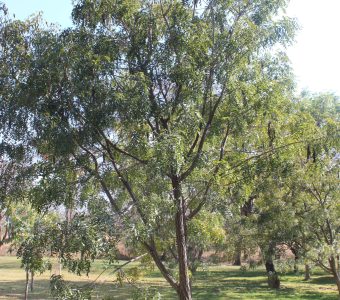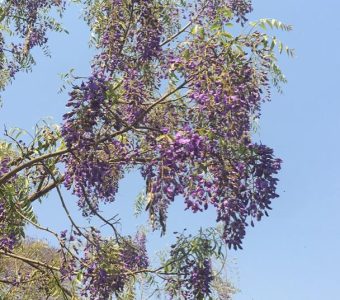


Botanical Name: Bolusanthus speciosus
Common Name: Tree Wisteria, maSunga
Plant Family: Fabaceae (Legume Family) Papilionoideae
Growth Form, Habitat and Distribution: A graceful small to medium-sized semi-deciduous tree, often multi-stemmed, with drooping foliage. Occurs as an occasional tree in most woodland types across Zambia at low to medium altitudes, usually on sandier soils.
Size: Height up to 8m but usually smaller, spread 2 to 4m.
Bark: Light to dark brown with a lattice of vertical fissures.
Leaves: Alternate, compound, imparipinnate, with 3 to 7 pairs of opposite lanceolate shiny, grey-green leaflets with tiny silvery hairs and an asymmetric base (up to 7cm) plus the terminal leaflet, leaflets dull green below, Midrib and veins distinctive and yellowish. Petiole 5 to 10cm.
Flowers: Attractive drooping, terminal sprays (up to 30cm) of blue to mauve pea-shaped flowers, August to November, sometimes longer.
Fruit: A flat, narrow, brown, indehiscent, papery pod (up to 10cm) in clusters maturing February to May. The pod containing 3 to 8 smooth bright yellow or brown seeds.
Uses: A protected species in South Africa and makes a beautiful garden tree. The wood is reddish-brown and valued for carving and furniture. The roots and bark are used in traditional medicine for abdominal complaints.
Other Species in Zambia: None. A single taxon occurring across south-central Africa.
